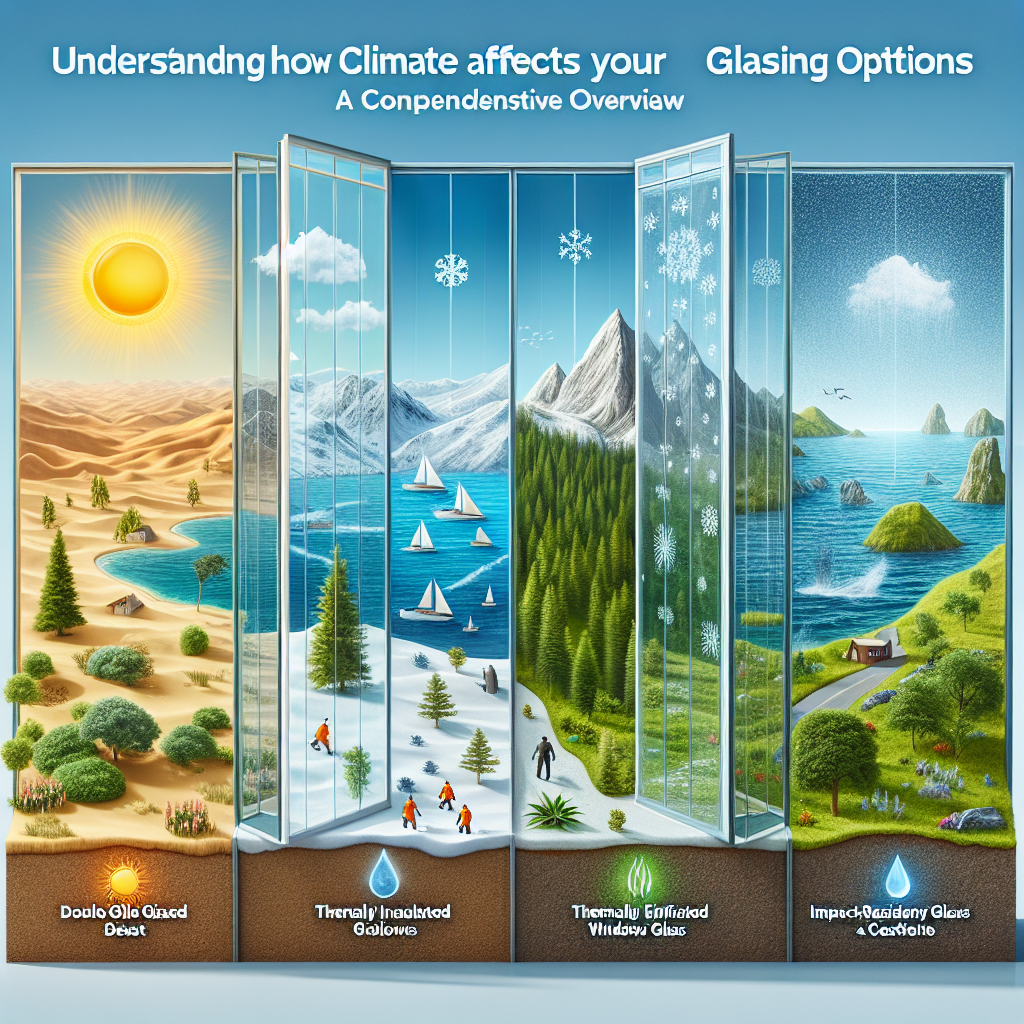When it comes to building design, glazing is often an afterthought. But your choice of windows and glass can significantly impact not only the aesthetics of your space but also your comfort, energy efficiency, and environmental footprint. One of the most crucial aspects to consider when selecting glazing options is climate. This comprehensive overview explores how different climates affect your glazing choices, ensuring that your investment is suited to your environment.
The Basics of Glazing: What You Need to Know
Glazing refers to the installation of glass in windows and doors, which serves various functions, including insulation, protection from UV rays, and aesthetic appeal. With advances in technology, numerous glazing options are available, each designed to meet specific challenges posed by different climate conditions.
Types of Glazing
-
Single Glazing: Just a single layer of glass. While cost-effective, it offers minimal insulation and energy efficiency.
-
Double Glazing: Two sheets of glass with a gas-filled space in between. This option significantly reduces heat transfer and is ideal for varied climates.
-
Triple Glazing: Three panes of glass that provide superior insulation. Best suited for extreme climates where maintaining temperature is essential.
-
Low-E Glass: Coated with a thin layer of metallic oxide, this glass reflects heat while allowing light in, making it suitable for both warm and cold climates.
- Tinted Glass: Reduces glare and heat from direct sunlight, perfect for warmer climates.
How Climate Influences Glazing Choices
Hot and Arid Climates
In regions characterized by high temperatures and low humidity—such as the southwestern United States—it’s essential to consider glazing options that minimize heat gain:
- Low-E Coatings: Reflect solar heat while allowing natural light, which can help keep indoor spaces comfortable.
- Tinted or Reflective Glass: These options help to reduce glare and heat absorption, making them popular choices for desert-like environments.
Cold Climates
For areas that experience harsh winters and significant snowfall, such as the northern U.S. and Canada, maintaining heat is crucial:
- Double or Triple Glazing: These glass types provide superior insulation and can significantly reduce energy costs in winter months.
- Warm Edge Spacers: Using spacers with low thermal conductivity can further enhance insulation performance.
Humid Climates
In regions like the southeastern U.S., where humidity is high, the challenge is often balancing heat management with ventilation:
- Impact-Resistant Glass: This is particularly important in hurricane-prone areas, as it provides safety and energy efficiency.
- Operable Windows: Allowing for natural ventilation can help combat humidity while reducing reliance on air conditioning.
Moderate Climates
If you’re in an area with mild winters and summers, like much of the Pacific Northwest, your glazing options can be more versatile:
- Dual-Function Glazing: Options that manage both heating and cooling needs work well, as the climate doesn’t lean excessively toward one extreme.
- Standard Double Glazing: Generally sufficient for insulation without the expense of triple-glazed options.
Energy Efficiency and Environmental Impact
Choosing the right glazing not only affects your comfort but also your environmental footprint. High-performance glazing can significantly reduce energy consumption, affecting both your utility bills and carbon footprint. Look for windows certified by energy efficiency programs, including ENERGY STAR, which indicate products meeting strict energy efficiency criteria.
The Role of Local Regulations and Building Codes
Before making a glazing decision, check local building codes and regulations. Some areas may have specific requirements to help improve energy efficiency and safeguard against extreme weather. Knowing these regulations can guide your choices and ensure you stay compliant.
Conclusion: Making the Right Choice for Your Climate
Selecting glazing options is not merely a matter of style; it’s deeply entwined with environmental considerations and your comfort. By understanding the nuances of how different climates affect glazing choices, you can make informed decisions that keep your home comfortable throughout the seasons while also being energy-efficient and sustainable.
Remember, the right glazing can lead to lasting benefits—improving not only your home’s energy performance but also enhancing your quality of life. Make your glazing choice a priority, and enjoy the rewards of a well-designed, climate-conscious living space.
By focusing on humanizing the content and providing clear, actionable advice based on varying climate conditions, this article serves to educate homeowners and builders alike, while remaining optimized for visibility in search engines.


